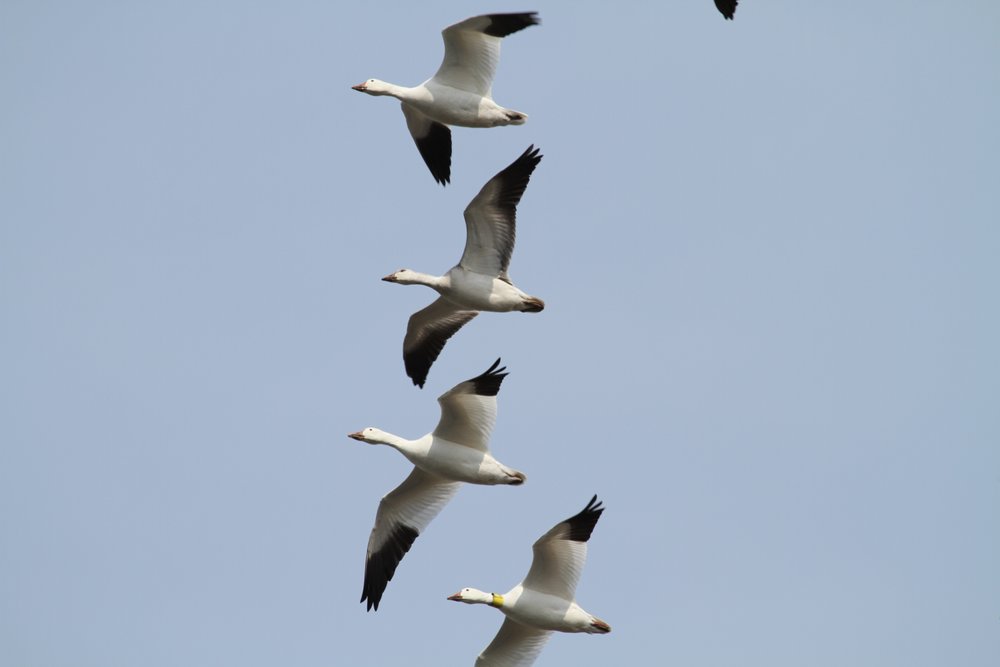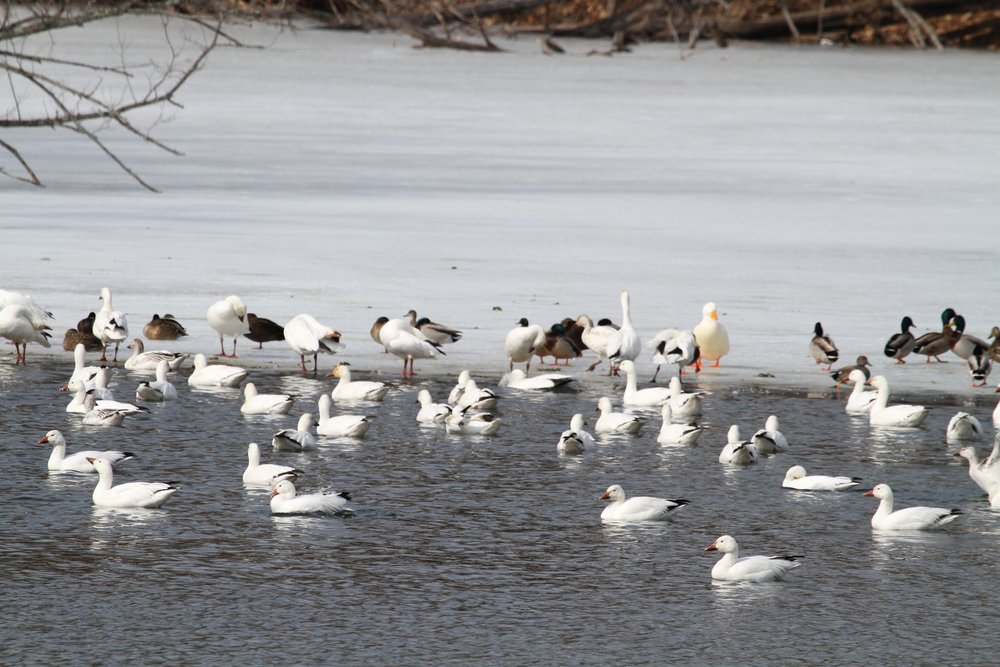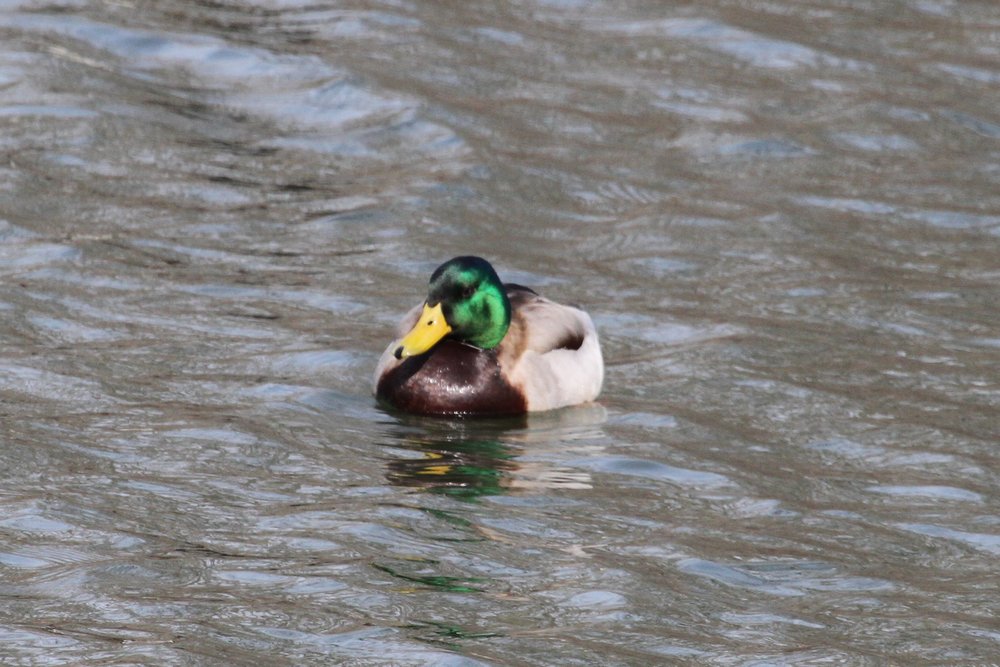 Snow Geese in flightThrough the winter on the east coast, I’m happy when I see and hear a few birds in the day. There are house finches at my feeder, the goldfinch, and a black-capped chickadee or two. And, of course, the reliable woodpeckers, the sapsucker letting out its little mew sound, the pileated cackling in the woods. These birds are like finding little diamonds in a vast landscape.
Snow Geese in flightThrough the winter on the east coast, I’m happy when I see and hear a few birds in the day. There are house finches at my feeder, the goldfinch, and a black-capped chickadee or two. And, of course, the reliable woodpeckers, the sapsucker letting out its little mew sound, the pileated cackling in the woods. These birds are like finding little diamonds in a vast landscape.
So when, on Sunday, my friend Bruce Robertson and I went out to see what ducks were coming through the valley, I was stunned by the masses of birds. Hundreds of Canada Geese congregated on the fields at Greig Farm and a flock of over 100 Snow Geese with their black tipped wings skittishly took off, circled and landed. In every direction I looked there were birds coming in or taking off. A puddle of ducks—the puddle just freshly melted ice from this interminable winter—brought me a Pintail with its elegant neck, and an American Wigeon.
 An abundance of birdsAnseriformes, I thought. That is the order that ducks belong in. Bruce is teaching an ornithology class at Bard College, and I’m sitting in, learning my birds in a new way, memorizing the orders and families. It’s created some order in my learning, which has been bird by bird. Now I see that the Wigeon and the Green-Winged Teal are related, the one with a black butt, the other with a cream butt. Butt, though, is not the right word, that would be the undertail coverts.
An abundance of birdsAnseriformes, I thought. That is the order that ducks belong in. Bruce is teaching an ornithology class at Bard College, and I’m sitting in, learning my birds in a new way, memorizing the orders and families. It’s created some order in my learning, which has been bird by bird. Now I see that the Wigeon and the Green-Winged Teal are related, the one with a black butt, the other with a cream butt. Butt, though, is not the right word, that would be the undertail coverts.
Seeing so many birds in one day, I was intoxicated. And I am trying to decide if the abundance felt so abundant because I’m coming out of winter or if simply lots of birds are a rare thing. I have been spending my long winter evenings sitting by the fire reading the journals of Alexander Wilson, the father of American ornithology. The sheer number of birds within his travels there in early 19th century is a joy to read of: hundreds of Clapper Rails in one day! Red-headed woodpeckers galore! If I see one of these birds I dance a jig for days.
 The oft-overlooked MallardIn that jig-dancing, I often forget to admire and enjoy the more common birds—the Mallard or the Canada Geese. I don’t want to take either of these birds for granted. Hundreds of geese are rounded up near airports every year and slaughtered—to keep planes safe. There’s a sense that there are plenty of geese out there—a few less won’t make any difference. It does. It will.
The oft-overlooked MallardIn that jig-dancing, I often forget to admire and enjoy the more common birds—the Mallard or the Canada Geese. I don’t want to take either of these birds for granted. Hundreds of geese are rounded up near airports every year and slaughtered—to keep planes safe. There’s a sense that there are plenty of geese out there—a few less won’t make any difference. It does. It will.


